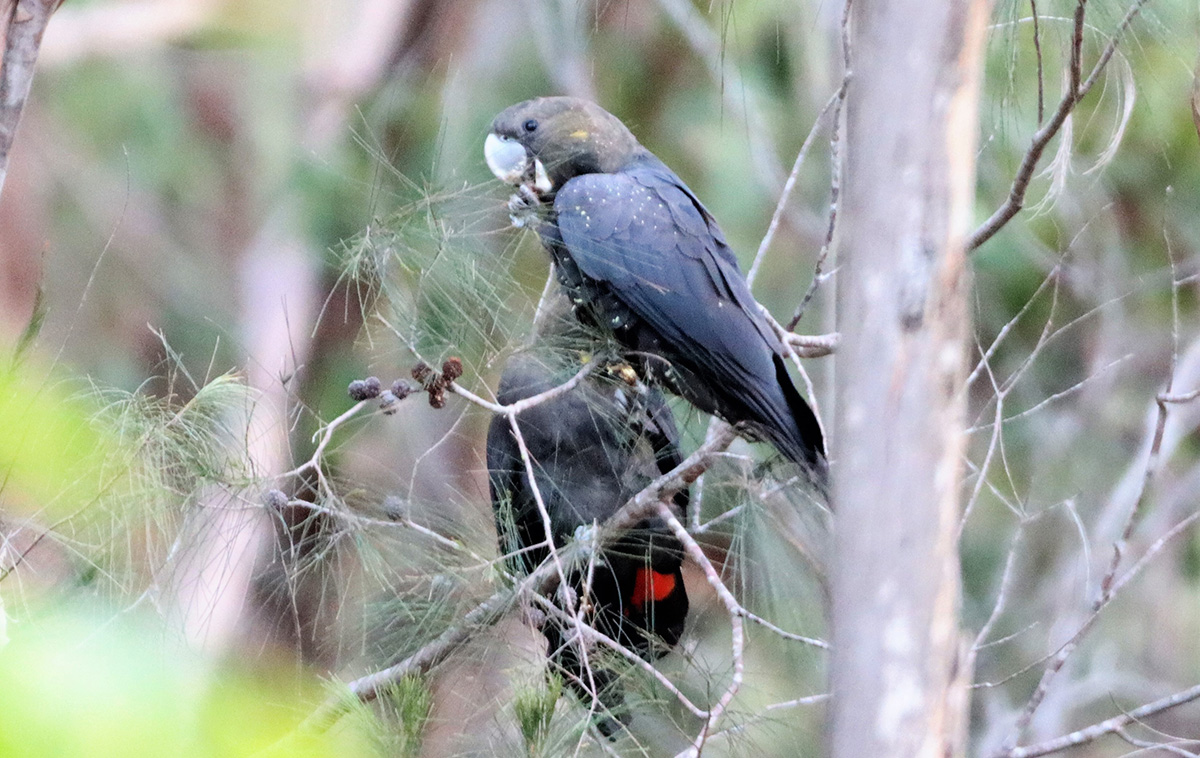How to Identify a Glossy Black Cockatoo
- The female Glossy Black Cockatoo is more identifiable because she will usually have yellow marking around her facial area.
- Some females have lots and others hardly any at all. Her tail will have striations and be a red morph into orange and even yellow.
- The male is the full brown/black colour with the red tail panels these will have some striations across them until about the age of 7 years of age.
- Very occasionally a male may have a small yellow marking on the face as well.
- The juveniles will have some small light-yellow dots across the wings and breast and cheeks as well as have striations in the tail. There is no need to get too hung up on who is who but if you can snap a few pictures and send them through this will help.
- Ratty dishevelled tail feathers can indicate recent nesting activity which could be seen on the female and juvenile.
- The Glossy Black Cockatoo is usually under 50cm in size, they are a brownish/black and is much smaller than the Red Tailed Black Cockatoo which is normally over 60cm in length, very black and also they have more of the typical Cocky crown on the head.
- If you get really stuck have a look at the females as they are more easily identified.
- Sightings of the Red Tailed Black Cockatoo on the Sunshine Coast are less common in the eastern sections.
[ Click on image to enlarge and read caption for identification tips. ]
Red-Tailed Black Cockatoo
We have the Coastal Sub species of the Red-Tailed Black Cockatoo here on the Sunshine Coast Calyptorhynchus banksii banksiI
The red-tailed black-cockatoo (Calyptorhynchus banksii) is one of Australia’s most iconic bird species. This large parrot can be recognised by the spectacular red (adult male) or orange-yellow (adult female) panels in its tail. Adult females also have orange-yellow bars across their chests and tails, and spots on their heads and wings. These birds are truly magnificent!

Yellow-Tailed Black Cockatoo
They are a large Black Cockatoo with a yellow patch on the cheek as well as the lovely yellow and black tail panel. The male has a pink ring around the eye.
They are often seen in large raucous groups and have made the most of the pine plantations as a food source.
They also feed on Banksia, Eucalypt and are one of the Cockatoos that chase a protein source in the form of grubs and often chew out trees to obtain one.









